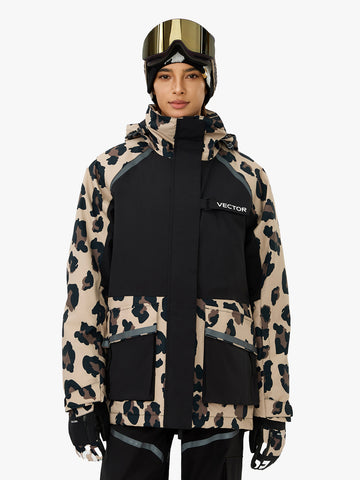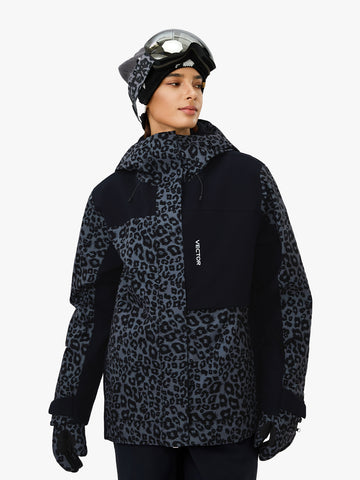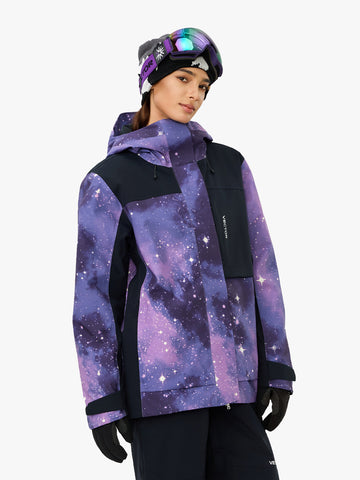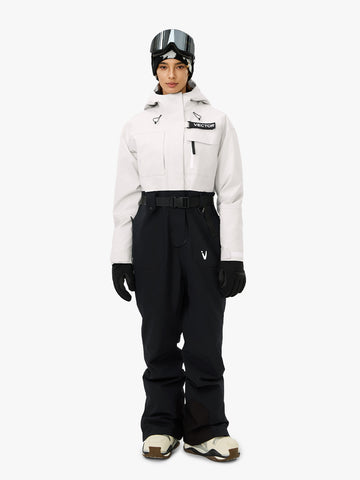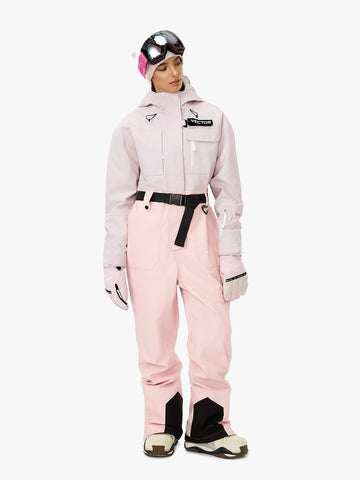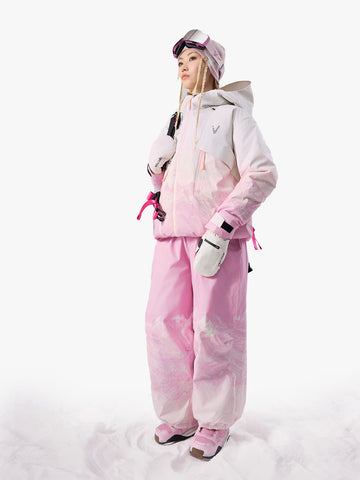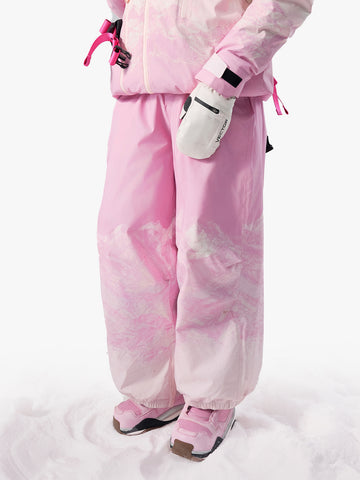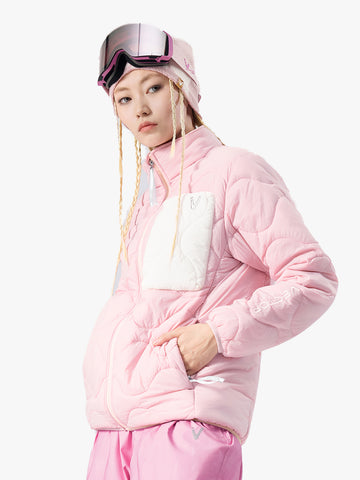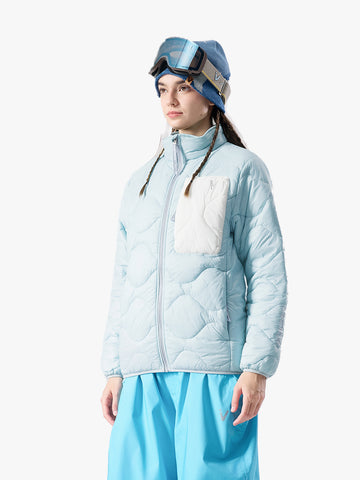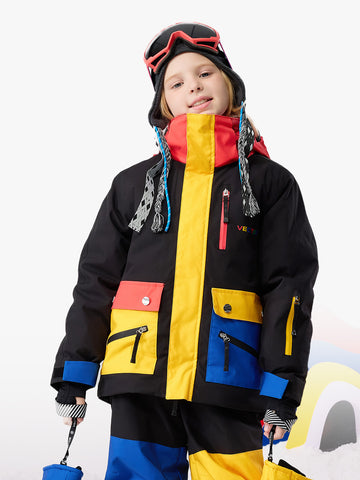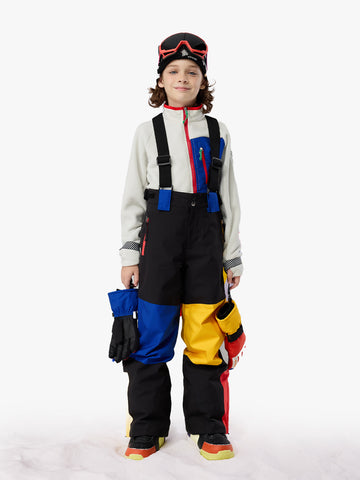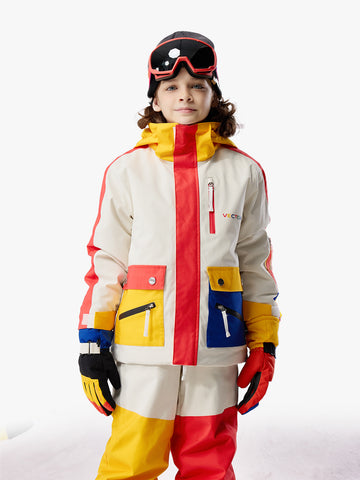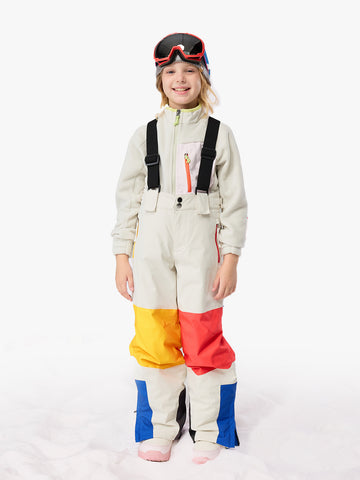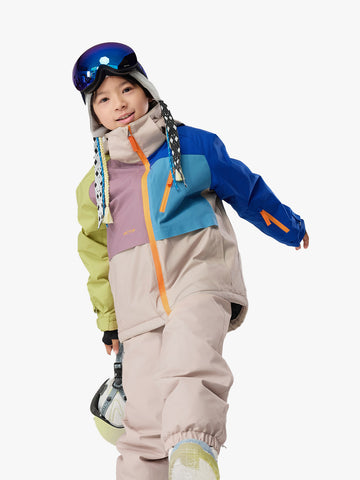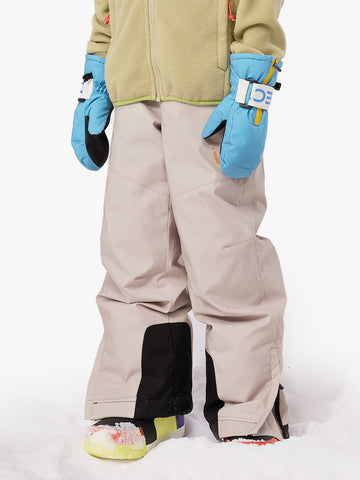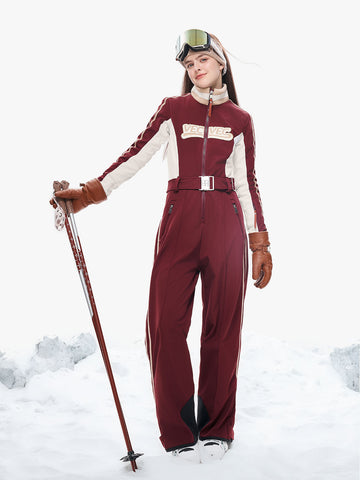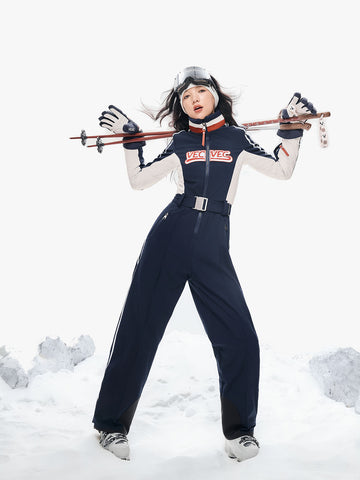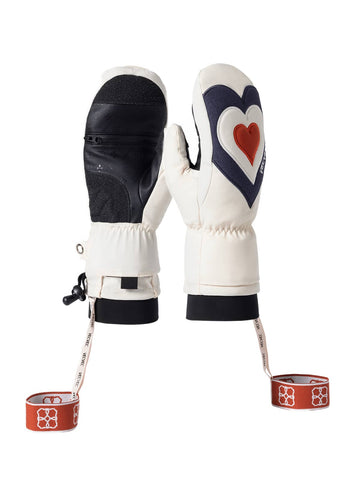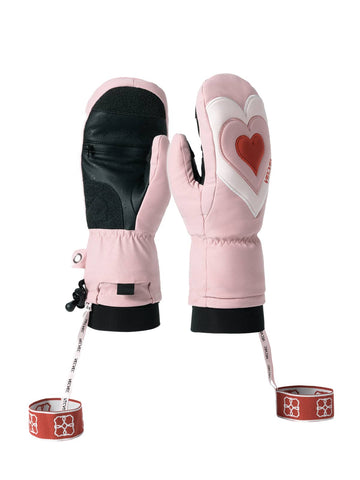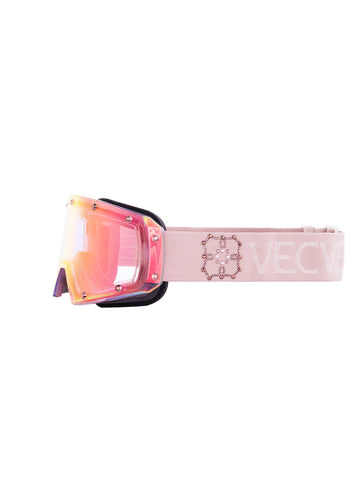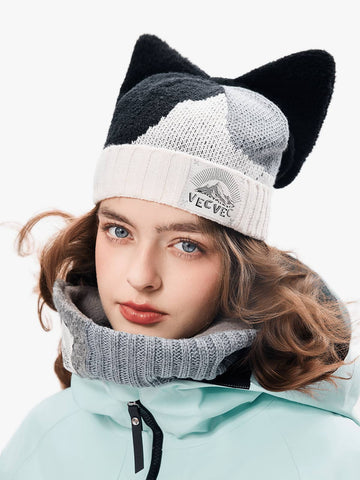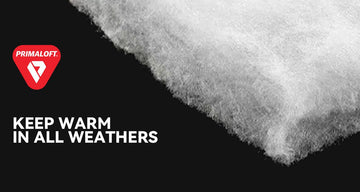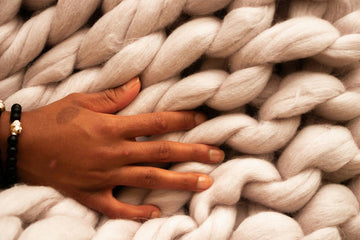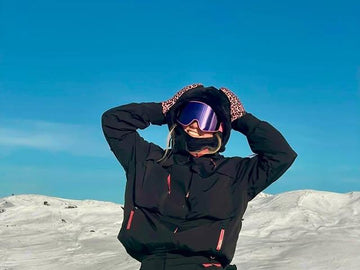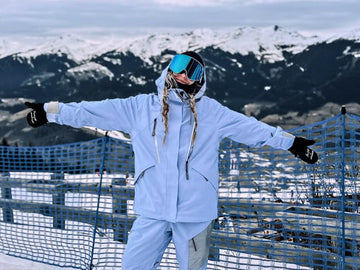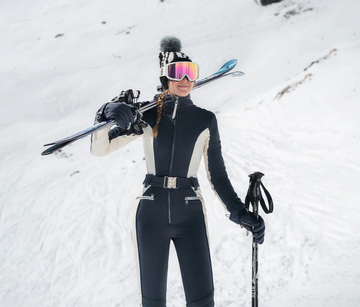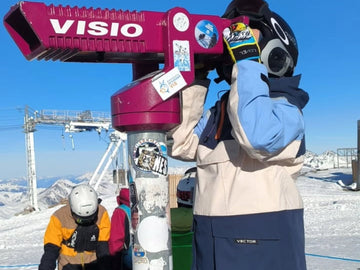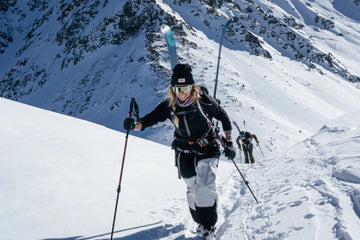The right ski goggles do more than block the wind—they improve visibility, reduce fog, and help you stay focused in changing light, whether you’re charging down steeps or exploring tree runs. Comfort and fit matter just as much as lens clarity. A well-designed pair effortlessly pairs with your snowboard jacket women, delivering a seamless fit with the helmet and hood. Later in the day, keeping your hands warm with the best ski gloves is just as important for control. And for all-day sessions, don’t overlook how women's snow pants support mobility without bulk.
Content
What Makes a Good Pair of Women’s Ski Goggles?
Lens Types Explained: Find the Right Visibility
Comfort & Fit: Why Women Need a Better Design
How to Care for Goggles & Pair With Your Winter Gear
What Makes a Good Pair of Women’s Ski Goggles?
Ski goggles aren’t just an accessory—they’re essential for clarity, comfort, and protection on the slopes. For women, the right pair should also offer a better facial fit and all-day wearability. So, what features truly matter?
1. Optical Clarity with Real Protection
High-quality visibility is non-negotiable on the slopes. Look for lenses that go beyond basic tint. REVO vacuum-coated lenses, like the ones featured in our top picks, reduce color distortion while boosting contrast—helping you see bumps, snow texture, and terrain changes more clearly. This premium coating also provides fog resistance and scratch protection, so your view stays crisp, not cloudy.
Plus, with UV400 protection blocking over 99% of harmful rays, your eyes stay shielded during long bluebird sessions or high-altitude exposure.
2. Functional Design That Fits Female Riders
Many standard goggles are designed for larger or more angular faces, which can lead to pressure points or gaps when worn by women. A well-designed women’s ski goggle features:
-
Smaller frame profiles for narrower faces
-
Flexible TPU frames that contour comfortably
-
Multi-layer foam cushioning to reduce pressure and enhance seal
And for those who wear glasses, an OTG (Over The Glasses) design is key. Goggles like these accommodate prescription eyewear while maintaining airflow and minimizing fog.
3. Stability, Comfort, and Speed When It Matters
Whether you’re riding tree runs or chairlift-lapping in deep snow, you need a goggle that moves with you—not against you. Magnetic lens systems offer a fast-swap solution for changing conditions, allowing you to quickly replace lenses without fumbling in the cold. But they’re not just convenient—the secure magnetic interface ensures the lens stays put, even in motion.
Double-curved lenses with hollow structures also help block glare and reduce distortion from the sides, giving you a safer and more immersive field of view.


Lens Types Explained: Find the Right Visibility
Great visibility starts with the right lens—and not all lenses are built the same. The conditions on the mountain can shift from bright sun to low clouds in minutes, so choosing the right lens type is essential for staying safe and riding with confidence.
-
REVO Coated Lenses: Clearer Contrast, Less Distortion
REVO vacuum coating offers more than just a mirror finish. It reduces glare, sharpens contrast, and avoids the color distortion common in basic tinted lenses. The result is clearer perception of terrain changes, shadows, and icy patches—especially important when visibility is limited.
-
Double-Layer & Anti-Fog Design
Most high-performance goggles use a double-layer lens with an anti-fog coating. This design traps warm air between layers to prevent condensation. Compared to single-layer options, this setup greatly reduces fogging, especially during high-exertion activity or sudden temperature changes. Combined with good ventilation channels and anti-fog film, these lenses help you ride without constantly stopping to wipe.
3. Lens Tint Options for Changing Light
Different lens tints are made for different lighting:
-
Dark/mirrored lenses for sunny bluebird days
-
Yellow or rose-tinted lenses for flat light or overcast weather
-
Photochromic lenses that automatically adjust based on light intensity

Comfort & Fit: Why Women Need a Better Design
Women-specific ski goggles go beyond simply scaling down in size—they’re built for real-world comfort and fit. A flexible TPU frame paired with multi-layer foam adapts to a variety of face shapes, minimizing pressure points for all-day wear. The magnetic lens system holds lenses securely in place, preventing wobble during sharp turns or bumpy descents. Meanwhile, OTG (Over-The-Glasses) compatibility allows easy integration with prescription eyewear, while improving airflow and ensuring a seamless fit with helmets.
How to Care for Goggles & Pair With Winter Gear
A high-performance pair of ski goggles, like those from VECTOR, deserves proper care to maintain clarity and durability over time. With a few simple habits, you can extend the life of your goggles and keep them performing at their best.
-
Avoid Wiping the Inner Lens When Wet VECTOR goggles come with anti-fog coatings on the inside. If moisture builds up, don’t wipe it off while wet. Let it air-dry naturally, or gently dab with a clean microfiber cloth to prevent scratching or damaging the treatment.
-
Always Use a Protective Case When not in use, store VECTOR goggles in a soft pouch or hard case to prevent scratches from other gear. This is especially important when packing with helmets, poles, or zippers that could damage the lens.
-
Ensure Compatibility with Helmets and Layers VECTOR goggles are engineered to fit most modern helmets with a snug, gap-free interface. When layering up, avoid bulky items around the face that could disrupt fit or airflow.
-
Take Advantage of the Magnetic Lens System Rather than carrying multiple pairs, VECTOR goggles let you swap lenses quickly with a secure magnetic system. This makes it easy to adapt to changing light conditions while keeping your pack lighter and your ride smoother.
FAQ
Q: What should women look for when choosing ski or snowboard goggles?
A: Key features include anti-fog technology, REVO-coated lenses for enhanced clarity, a flexible TPU frame, and a magnetic lens system for quick swaps. Women should also prioritize goggles that are specifically shaped to fit smaller facial profiles for lasting comfort and a secure seal.
Q: How can I keep my goggles from fogging up?
A: Choose goggles with dual-layer lenses and anti-fog coating. Avoid wiping the inside lens, and ensure your helmet or beanie doesn't block ventilation channels. For best results, always store your goggles in a dry case and avoid putting them on your forehead when skiing.
Q: What should women look for when choosing ski or snowboard goggles?
A: Key features include anti-fog technology, REVO-coated lenses for enhanced clarity, a flexible TPU frame, and a magnetic lens system for quick swaps. Women should also prioritize goggles that are specifically shaped to fit smaller facial profiles for lasting comfort and a secure seal.
REFERENCE
https://www.outsideonline.com/outdoor-gear/snow-sports-gear/best-ski-and-snowboard-goggles/
https://www.slopemagazine.com/snow/ski-goggles/
https://www.switchbacktravel.com/best-ski-goggles
https://www.rei.com/learn/expert-advice/best-snow-goggles.html
https://gearjunkie.com/winter/skiing/best-ski-goggles
